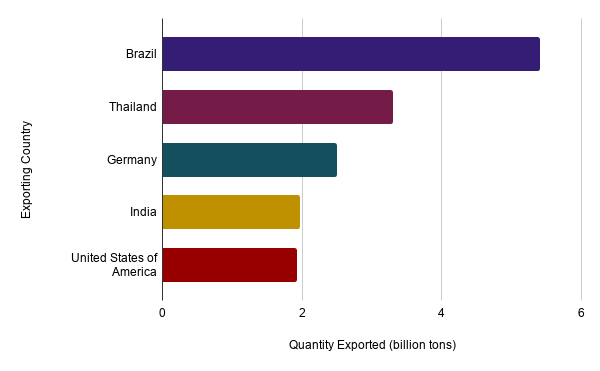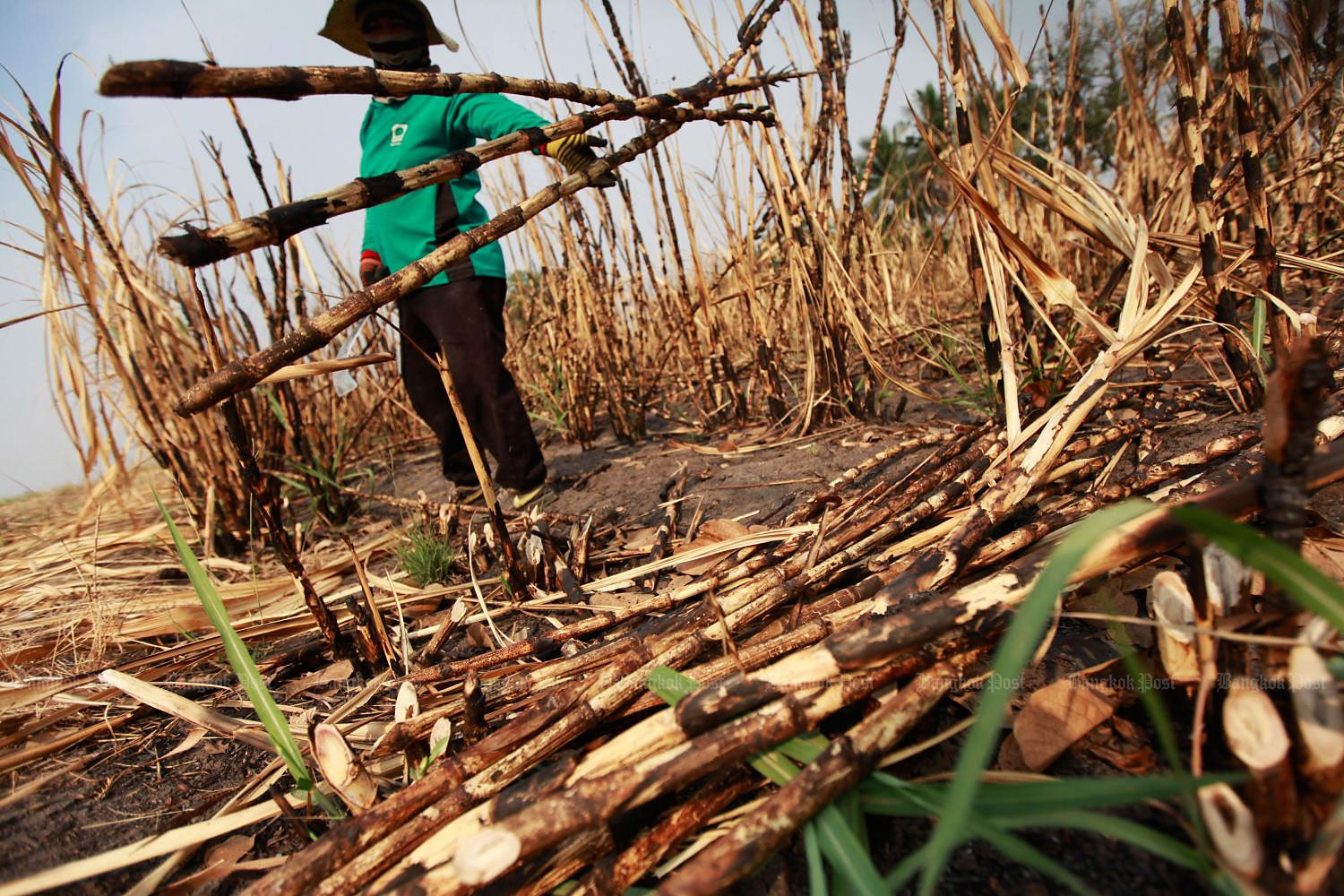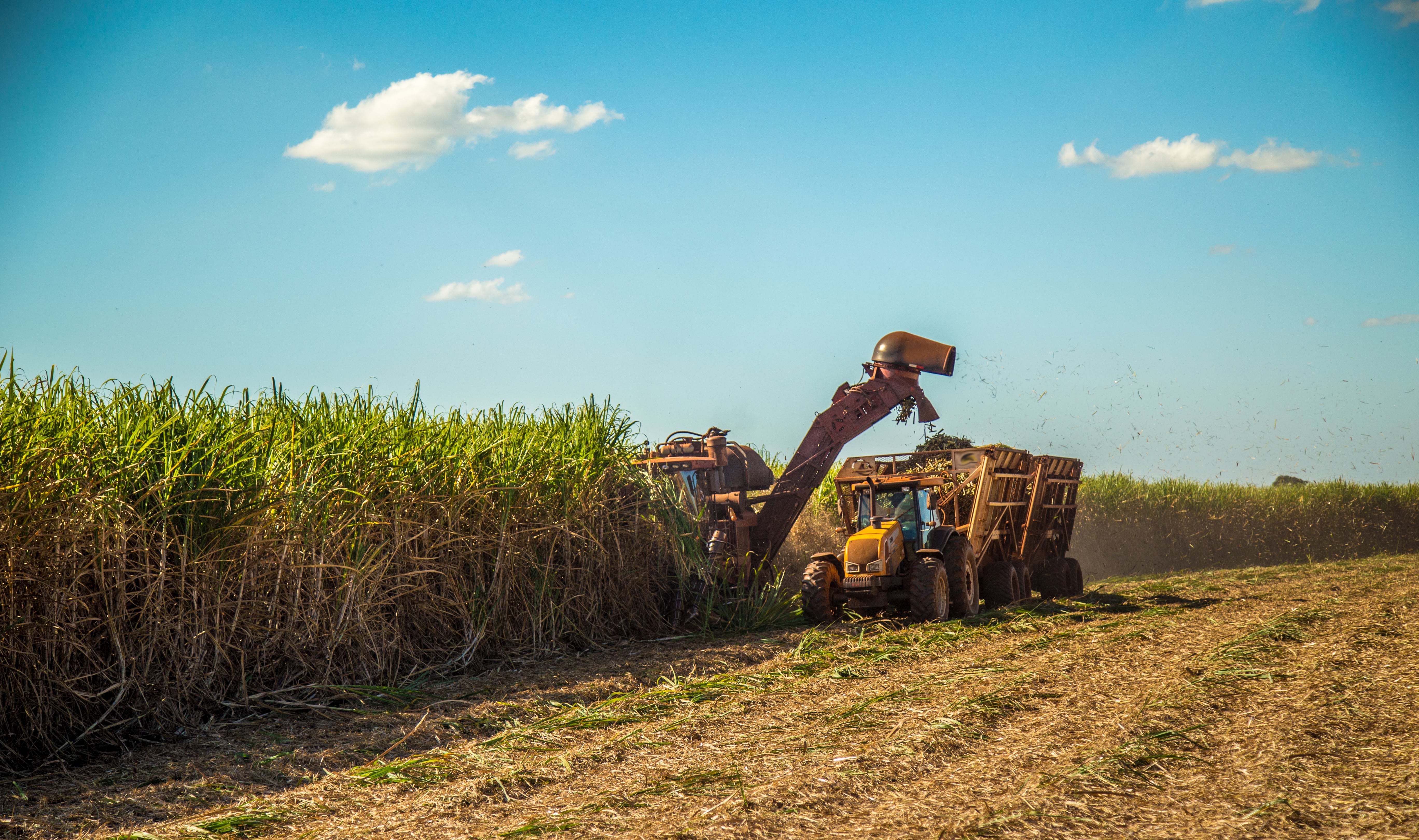Implementation of burned sugarcane regulation in Thailand faces challenges
Sugarcane burning in Thailand
Top 5 global exporters of sugar in 2019

Source: ITC, Trademap
Thailand is the second-largest global exporter of sugar, exporting 70-75% of its sugar production. As a result, sugarcane is one of Thailand's main crops, and a major employer providing 1.5 million jobs and generating over USD 6 billion (THB 180 billion) yearly in revenue. The Thai government has helped maintain Thailand’s competitiveness in the global sugar industry through legislation, such as the Cane and Sugar Act which introduced a quota and price support system and a distribution mechanism between growers and millers. However, a major negative economic externality that the Thai sugar industry has is air pollutants caused by emissions from farms that are blown by the wind into Bangkok.
Sugarcane harvesting takes place from November to February every year which is when Bangkok experiences a large amount of pollution. Burnt sugarcane is widespread and accounts for 60–67% of total production. The tradition amongst sugarcane farmers in Thailand is to burn sugarcane during harvesting, as it is cheaper, less labor-intensive, and less time-consuming, as compared to cutting off the cane leaves manually or machine harvesting. For the majority of Thai sugarcane farmers, harvesting machinery is unaffordable, and according to the Agricultural Promotion Department, the machinery is also in short supply. As a result, mechanized harvesting is practiced only 10% of the time.

Source: Bangkok Post
Another factor leading to the burning of sugarcane is that many farmers are committed to contracting farming schemes, which leads to increased pressure for farmers to deliver sugarcane on time to the millers. Droughts that have been induced by climate change have led to the harvesting period being shortened. Therefore, time pressure and the limited harvesting period have propelled farmers to burn sugar as it is the quickest harvesting method. As a means of curbing this continued sugarcane burning, which is a major source of air pollution, leading to adverse effects on human health and on the environment, the government has enacted a regulation limiting sugarcane farmers to a 20% burned cane requirement for the current marketing season.
Challenges in enacting the burned cane regulation
Despite the burning ban decreed by the Ministry of Agriculture last year, a number of factors have led to its impediment:
> The government has continued to place policies promoting the expansion of the sugarcane industry through subsidies, quotas, extension services, and other measures.
> The Thai government often accepts requests from agribusiness companies and farmer groups to relax the percentage of burnt sugarcane that can be sold, indirectly leading to increased burning of sugarcane.
> Sugarcane burning is regulated by the government, using a single-command system, whereby provincial governors are given sole authority in each province to deal with the problem of air pollution from agricultural burning. This system is slow and results in limited levels of accountability, with no one monitoring the governors' performance.
Solutions

One way to mitigate the problem would be for the Thai government to subsidize or provide harvesting machines to farmers. This would improve the quality of harvesting sugarcane in the country, making the process faster, more efficient, and less labor-intensive, eliminating the need to burn sugarcane. Other possible solutions include the promotion of multi-crop farming methods, including crop diversification and rotation; enacting land reform measures, and the removal of agribusiness monopolies, which would allow smallholder farmers to produce more sugarcane whilst being less indebted to large agribusiness firms.
Sources:
Bangkok Post. “Why farmers continue to burn despite city smog.”
Southeast Asia Globe. “Burning dilemma: Sugarcane farmers struggle in Thailand's green vision.”
Global Rubber Markets. “Thailand’s cane crushing slows as government tightens regulation on crop burning.”
S&P Global Platts. “FEATURE: Thailand's goal to reduce sugarcane burning raises need for manual labor.”




